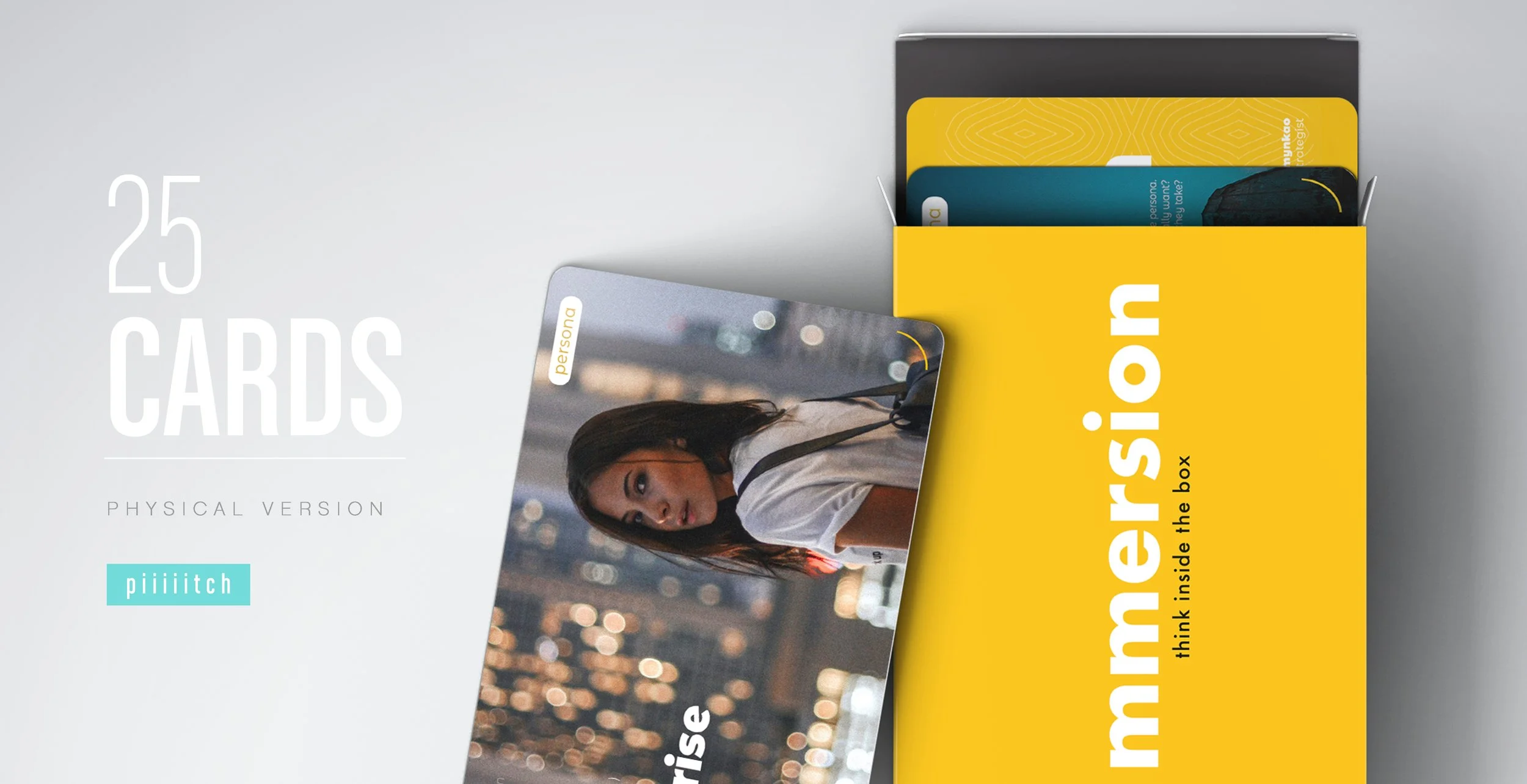i mmersion
Understanding of what the project is about.
Actions
It’s not usually the most fun step of the flow. And to be honest, it’s not. We have the tendency to go through it as fast as possible because it’s not the most exciting part, it’s boring. In fact, it’s not boring. It’s super boring. In that step, we usually are passive, waiting for information. Especially, that step is crucial because all the rest of the flow depends on what happens during the beginning. So instead of being passive, being active makes sure we have all needed information.
Doing the research, getting the data. Sometimes, we might… not use it. Why? Because in the “ideation step”, sometimes we need a set of data in order to base the idea on tangible things. Sometimes we don’t. And if all agencies/creatives do like that, we might end with the same (or similar) idea.
Ask questions
It’s a paradox but, during that step, we should asking “weird” questions. Questions we hadn’t known why we ask for it, but perhaps later we will (sometimes, it makes the difference). During the brainstorm session we feel free to talk about things, to ask about things. And indeed, during the “immersion step” (data collection), we should even feel more free to ask questions (without the fear of being stupid). In some way, the “immersion step” is a pre-“ideation step”.
There’s not a stupid question. There’s the regret we have: “the feeling stupid for not asking questions when we had the opportunity”.
Time is the key in a pitch, so if there’s a moment where we can save time, it’s during the “immersion step”. It’s all about optimization & preparation.
Not a reading. A conversation
It’s funny & terrible at the same time, to know that is quite a same situation: we get a brief, there’s always missed information. Not because it is ill-prepared. But because there’s often new new information coming. Why we have to spend “brain energy” each time, to think about what we should ask? There’s no perfect question list, but definitely there are basic questions that needed answers. That’s why we should prepare some questions before receiving the brief itself. Let’s put it that way: when we have a meeting, we know there will be an interaction with the people we will meet, so we prepare some questions in advance. We can approach the “immersion step” in the same way: taking “a brief” is a conversation.
The “immersion step” is: when we think inside the box to understand what the box is about. And then later in the flow, “ideation step” is: when we are able to think outside the box.





